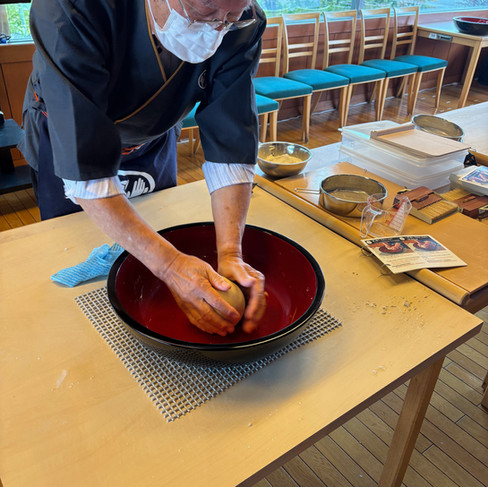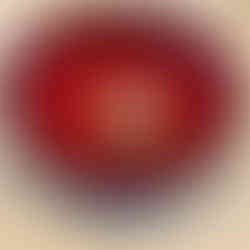Making Soba Noodles In The Mountains Of Japan
- carolinestratos
- Sep 14
- 4 min read
When in Japan, make your own soba noodles, and don't forget to share a few laughs in the process.

Konnichiwa! As someone who never thought they'd make it to Asia at the age of 26, I'm fortunate to say that my first visit to the continent was to the beautiful country of Japan. Japan was such a great introduction to my Asia travels, as it offered the chance to get accustomed to a culture that has a deep respect for food, each other, and nature. During this Japan trip, I mainly stuck to Kyoto and Tokyo, except for the few days that I ventured off to Kariuzawa, a resort town in the mountains of Nagano Prefecture. I'm so glad that I was introduced to this charming mountain town at the base of Mount Asama, and to be able to share my experience with you all!
The History Of Kariuzawa
Kariuzawa is an interesting place in that it has a history of being a summer retreat for the Japanese Imperial family, and also a location to indulge in winter sports such as skiing and snowboarding. In fact, Kariuzawa held the Nagano Olympic Games in 1998. Kariuzawa has become a famous villa area ever since a Canadian missionary named Alexander Croft Shaw visited Karuizawa and was impressed by the climate and nature that the town offered, and the area has attracted other missionaries and wealthy Tokyoites ever since.
When I visited the town, I realized that Kariuzawa attracts plenty of families looking for a much-needed mountain escape and who want to take part in various sports that the mountains offer, or relax in the numerous onsens that properties such as the Kariuzawa Prince Hotel West maintains. However, one aspect of Kariuzawa that makes it even more of a unique destination, is the fact that it has a rich history of traditional soba-noodle making.
Soba Labo
Soba Labo is the soba noodle-making workshop in Karuizawa that our group visited. Not many other people can say that they learned how to make soba noodles from a master who's been making them for 45 years! During this one-hour instruction, participants will be led by a soba noodle master through the process of kneading, stretching, and cutting soba noodles. To end the course on a delicious note, you'll get to taste your own soba noodles that are accompanied with sides of tempura and a classic walnut sauce. You'll also get to dress up in a classic soba making outfit, which includes a samue, maegake, and tenugui.
This class is perfect for travel groups and those looking to sharpen (pun intended) their Japanese culinary knowledge.
Art of Soba
Soba noodles are traditional Japanese noodles made from buckwheat flour that are tender, chewy, and usually enjoyed hot in a soup or cold with dipping sauces.
Cultural Context
Before enduring deep meditations and long fasts, Zen Buddhist monks used to eat buckwheat flour and water mixed into a ball. This technique was later brought to Kyoto from China by a monk in the 13th century.
Not only is soba a spiritual food, soba noodles are popular among the working crowd in Japan. Our soba noodle master noted that Japanese businessmen eat these noodles in an hour or less, making it the perfect high-protein, midday meal.
Consumption Method
When eating soba noodles, it's imperative to slurp them in order to enjoy the flavors better.
As noted above, soba noodles can be served either warmed or chilled. At the end of our soba-making class, we enjoyed our soba noodles cold with a walnut sauce on the side.
My Soba Noodle-Making Experience
Step #1: Get fitted in a traditional soba-making outfit

These outfits typically consist of samue, maegake, and tenugui, which are Japanese working cloths and headbands. James will be our model for this one ;)
Step #2: Get your work station set up

Some of the materials that you'll need include a soba-kiri knife (specialized knife), a large bowl, and a wood koma ita, or cutting guide.
Step #3: Begin mixing the dough

You'll sift your buckwheat flour and wheat flour into a bowl before adding water and tossing the mixture with your hands to incorporate. The mixture will be crumbly.
Step #4: Knead the dough
You'll begin kneading your dough into a chrysanthemum-shaped ball, and then will flatten it into a 1-inch-thick disk. Above, you'll find pictures of our soba noodle master shaping the dough until it's semi-firm and smooth.
Step #5: Roll out and fold your dough

Make sure your work surface is dusted with tapioca starch before rolling out the dough into an even square. Then, fold your square in half lengthwise, sprinkle with tapioca starch, and fold it in half to create a 9-inch square with 4 layers of dough.
Step #6: Cut the noodles

Now for the most tedious and nerve-racking part...cutting the noodles. This is truly an art form, but you want to make sure that you line up your noodles to a cutting guide and cut the dough into thin, uniform noodles. Be sure to dust the excess tapioca starch off of your noodles.
Step 7: Cook, eat, and enjoy!
At Soba Labo, your instructors will cook and serve up your delicious soba noodles with a side of tempura and walnut sauce. You'll be proud of your creation, and let's hope that your soba noodles turn out better than our fettuccine-like noodles.


















Comments